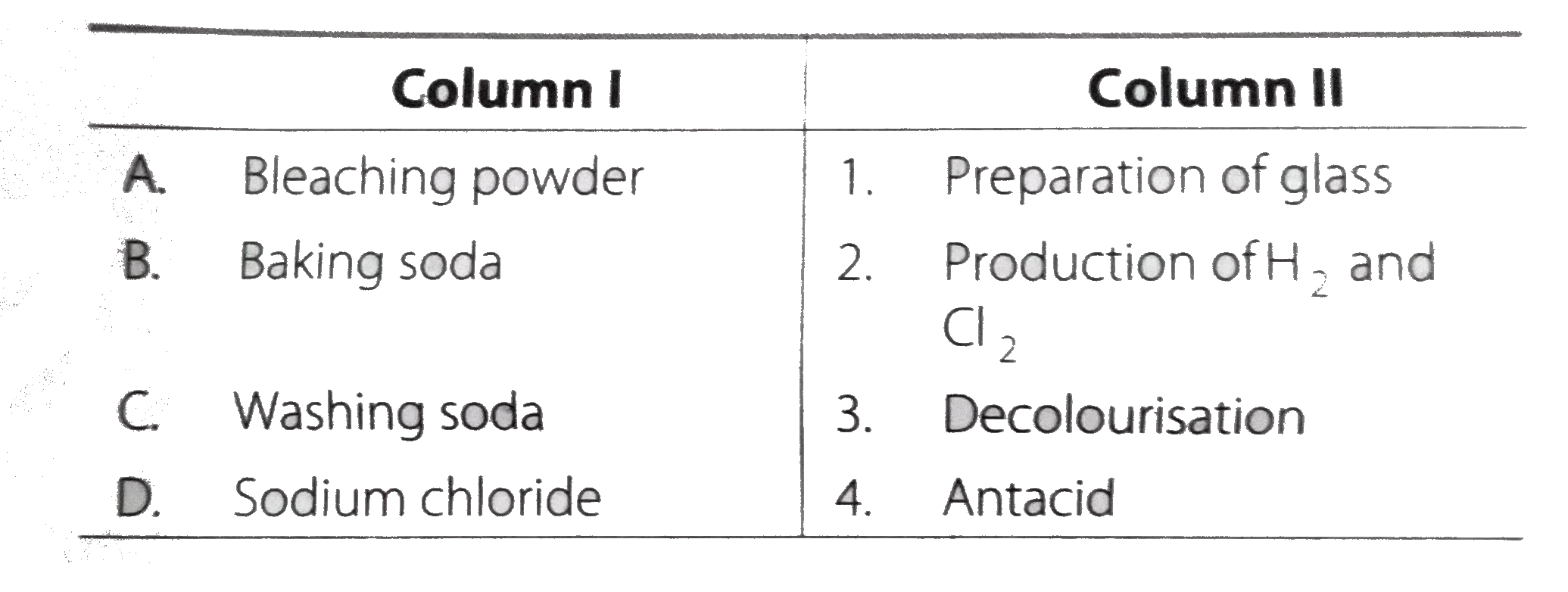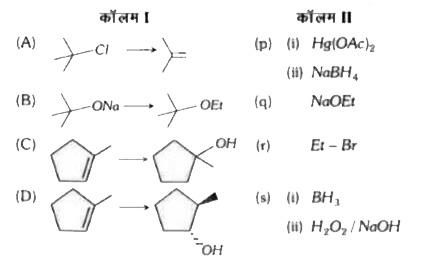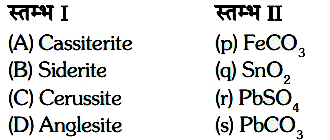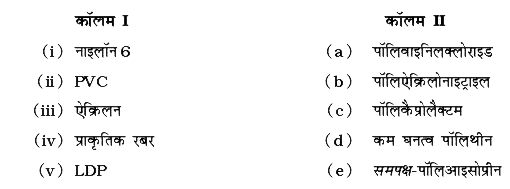Match the important chemicals given in Column (A) with the chemical formulaw given in Column (B)
 Solution in Kannada
Solution in Kannada
Column (A)Column (B)(a) Plaster of Paris(ii)CaSO4.112H2O(b) Gypsum(iii)CaSO4.2H2O(c) Bleaching Powder(iv)CaOCl2(d) Slaked Lime(i)Ca(OH)2
Topper's Solved these Questions
- BOOK - ZEN PUBLICATIONCHAPTER - ACIDS, BASES, AND SALTSEXERCISE - ZEN ADDITOINAL QUESTIONS SECTIONS (Short Answer Type Questions -II)26videos
ACIDS, BASES, AND SALTS
- BOOK - ZEN PUBLICATIONCHAPTER - ACIDS, BASES, AND SALTSEXERCISE - ZEN ADDITOINAL QUESTIONS SECTIONS (Long Answer Type Questions)21videos
ACIDS, BASES, AND SALTS
- BOOK - ZEN PUBLICATIONCHAPTER - ACIDS, BASES, AND SALTSEXERCISE - ZEN ADDITOINAL QUESTIONS SECTIONS (Very Short Answer Type Questions )5videos
ACIDS, BASES, AND SALTS
- BOOK - ZEN PUBLICATIONCHAPTER - CARBON AND ITS COMPOUNDS EXERCISE - ACTIVITY2videos
CARBON AND ITS COMPOUNDS
Similar Questions
When electricity is passed through a common salt solution, sodium hydroxude is produced along with the liberation of two gases X and Y. X burns with a pop sound whereas Y is used for disinfecting drinking water.
(i) Identify X and Y
(ii) Give tha chemical equation for the reaction stated above.
(iii) State the reaction of Y with dry slaked lime.01:27View SolutionName the substance that is produced from baking soda and is used in the removal of permanent hardness of water.
02:11View SolutionHow will you test for the gas which is liberated when hydrochloric acid reacts with an active metal ?
01:58View Solutiontake some carbon compounds ( naphthalene , camphor , alcohol ) one by one on a spatula and burn them
* observe the nature of the flame and note whether smoke is produced
* place a metal plate above the flame . Is there a deposition on the plate in case of any of the compounds ?02:14View SolutionMatch the polymer given in Column I with their chemical names given in Column II
03:54View SolutionMatch the chemical substances given in column I with their appropriate application given in column II
 04:48View Solution
04:48View SolutionMatch the important cvhemicals given in column I with the chemical formula given in column II.
02:06View SolutionMatch the amino acids in Column I with their chemical nature in Column II and choose the correct option given below.
 01:34View Solution
01:34View SolutionMatch the chemical in Column I with their uses in Column II.
00:46View Solutionकॉलम I में दिये गये रासायनिक रूपांतरणों को कॉलम II में दिए गये उपयुक्त अभिकर्मकों के साथ सुमेलित कीजिए।
 02:19View Solution
02:19View SolutionMatch the polymer given in Column I with their chemical names given in Column II
 05:04View Solution
05:04View SolutionMatch the chemical substances given in column I with their appropriate applocation given in column II
02:54View SolutionMatch the important cvhemicals given in column I with the chemical formula given in column II.
 07:05View Solution
07:05View Solutionस्तम्भ-I में दिये गये अयस्क को स्तम्भ-II में दिये गये रासायनिक सूत्र से मिलान कीजिए।
 04:12View Solution
04:12View Solutionकॉलम I में दिए गए बहुलकों को कॉलम II में दिए गए उनके सही रासायनिक नामों से सुमेलित कीजिए।
 03:21View Solution
03:21View Solution

